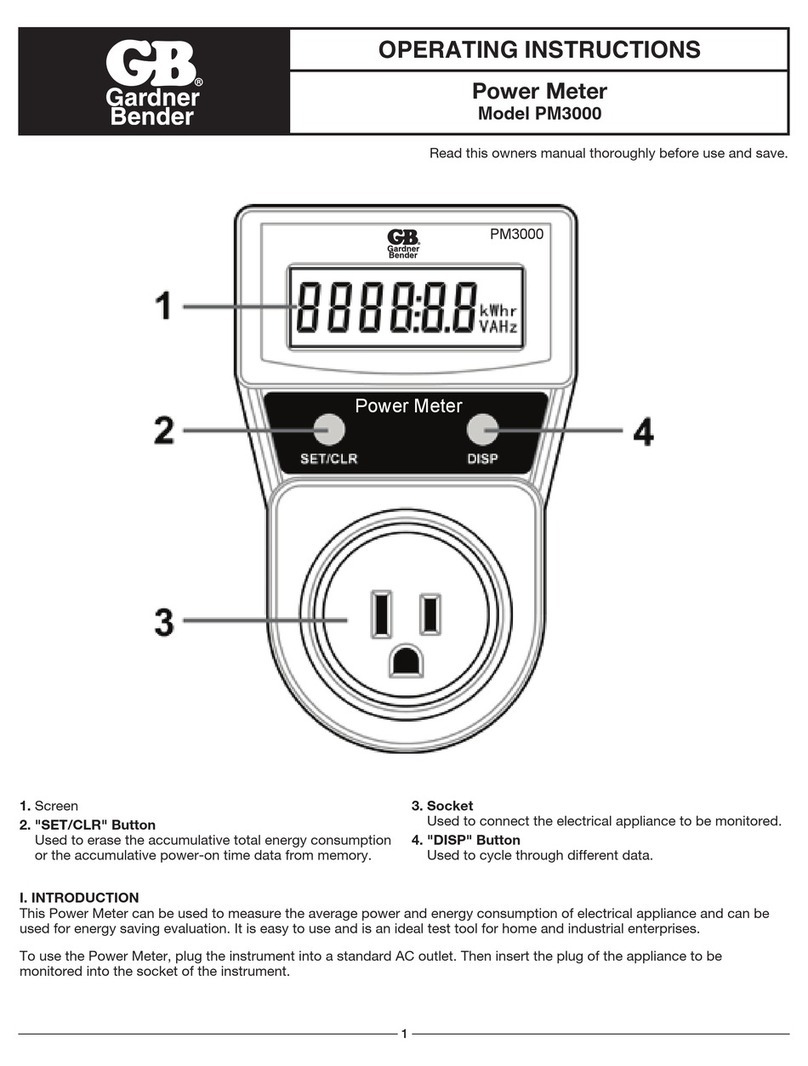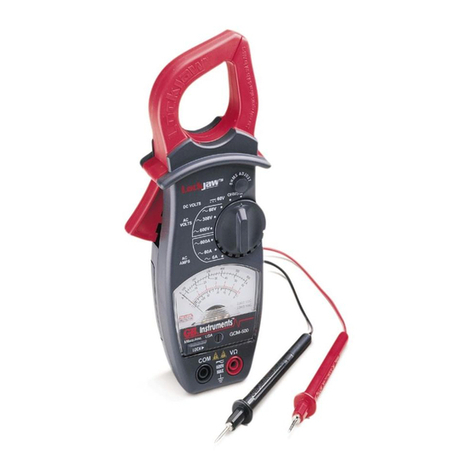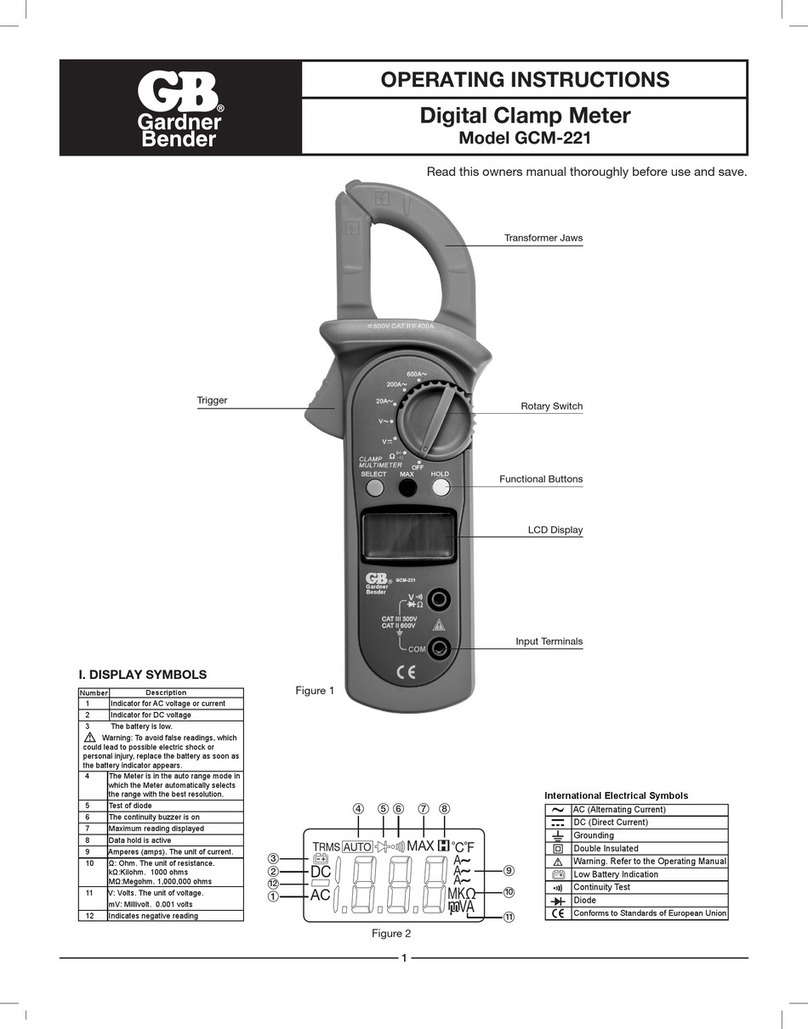
4 5
2.1 For Your Safety
1) Use extreme caution when checking electrical circuits.
2)
!WARNING Do not stand in wet or damp work areas
when working with electricity. Wear rubber-soled boots
or shoes.
3) !WARNING Do not apply more voltage or current than
the set range of the meter will allow.
4) !WARNING Do not touch the metal probes of the test
leads when making a measurement.
5) Replace worn test leads. Do not use test leads with
broken or tattered insulation.
6) Discharge a capacitor before measuring it.
7) Remove the test leads from the circuit being measured
as soon as the test is completed.
8) !WARNING Do not measure voltage when the
function/range switch is set on the resistance (ohms)
range. Never measure current when the meter is set on
the resistance range. Setting the meter on the incorrect
function may burn out some of the internal circuitry and
may pose a safety hazard.
3. Operating Suggestions
1) Set the function/range switch to the proper position
before making a measurement. When the voltage or
current is not known, it MUST be determined that the
capacity of the selected range will handle the amount of
voltage or current in the circuit (see #3 under For Your
Safety).
2) Avoid placing the meter in areas where vibration, dust,
or dirt are present. Do not store the meter in excessively
hot, humid, or damp places. This meter is a sensitive
measuring device and should be treated with the same
regard as other electrical and electronic devices.
3) Using the meter in areas with high magnetic fields can
result in inaccurate readings.
4) Never immerse the meter in water or solvents. To clean
the housing, use a damp cloth with a minimal amount of
mild soap.
GAR_TL_023_0912_GCM-221_Manual.indd 4 9/12/12 4:13 PM






























